Weaving Tutorial: How to Make a Coaster On a Frame Loom

Learn how to weave a simple coaster following textile artist Marion Weymes free tutorial and downloadable template
Textile artist and Domestika teacher Marion Weymes (@marionweymes) shows you how to create a simple-yet-stylish woven coaster using a hand-held frame loom. She’s also included a template of her coaster design which you can download to follow along.
How to Make a Simple Coaster On a Frame Loom
You’ll Need:
- A hand-held loom (you can make your own from a picture frame and nails)
- Cotton warp thread
- A heddle bar
- Scissors
- Some colorful double knit yarn (three different colors)
- A long, metal needle or sewing needle and a smaller needle
- Weaving comb or brush
- Cotton cord
Download the template below to get started.
Step 1: Warp your loom
Marion uses a small, hand-held loom. If you don’t have one of your own, you can make a very simple loom using a picture frame and some nails. Take your cotton thread and tie it to the bottom of your loom. Weave these warp threads up and down the length of your loom, from top to bottom, until the thread covers a width of around 10cm. Make sure you pull the thread taut as you weave, wrap the end a few times around the bottom of the frame, and cut off any excess.
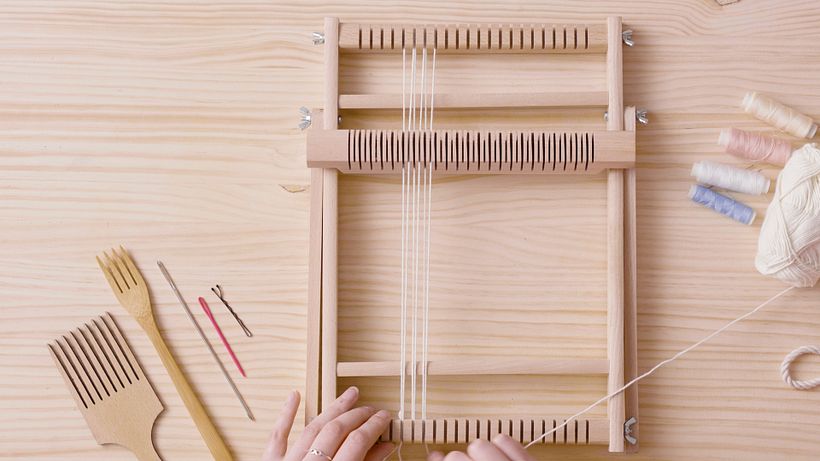
Step 2: Tie a row of knots
Marion takes another piece of thread and uses it to tie a double knot around the base of each warp thread, creating a straight line of knots running horizontally along the base.
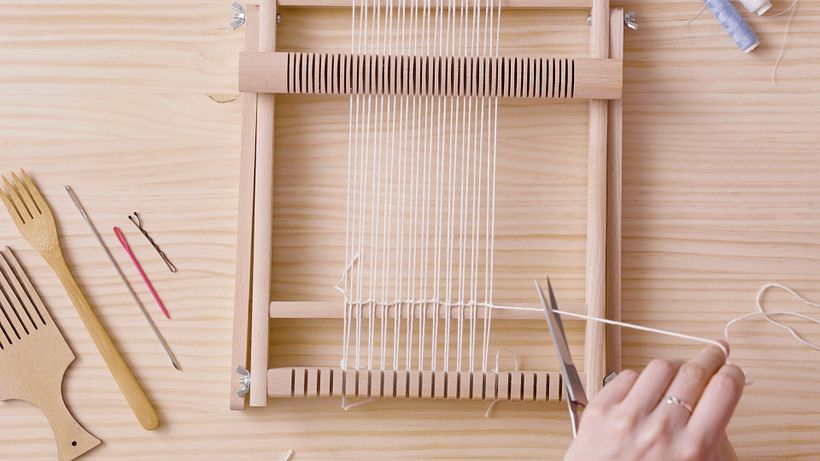
Step 3: Weave your first two lines
Take a long piece of colorful yarn, double it up, then thread it through your needle. Weave your yarn over and under every second warp thread from right to left, using your tapestry comb to push your yarn down when you finish each line. Now, weave back from left to right, making sure you go over and under the opposite threads to the previous line. Be careful not to pull the yarn too tightly, and gently pat the line down when you finish.
Tip: Don’t begin weaving on the outermost thread, but count inwards two or three warp threads and start there.

Step 4: Create your diagonal line
Weave your next three rows, but leave out the final warp thread on the left-hand side. Continue leaving out another warp thread every three rows, so that your line is gradually getting shorter as you go, creating a diagonal line. If you are running out of yarn, push the end underneath your warp threads towards the back. Then take your new piece of yarn and push it through from the back to continue with your weaving. When you have finished your rows and are down to your last warp thread, push the yarn through the back of your design and cut off any excess.
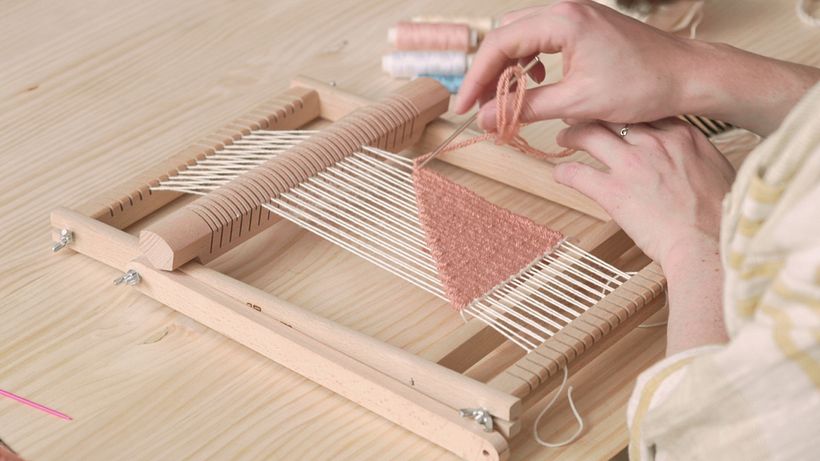
Step 5: Create your second diagonal line
Take a different colored yarn and begin the same as before, by doubling up your yarn and threading your needle. This time, you are going to begin on the left-hand warp and start weaving from left to right. Instead of removing a warp thread every three rows, begin adding one so that your lines are getting longer as you weave. This will make the diagonal line run parallel to the edge of your previous line. When you reach the end, pull the yarn out towards the back of your design.
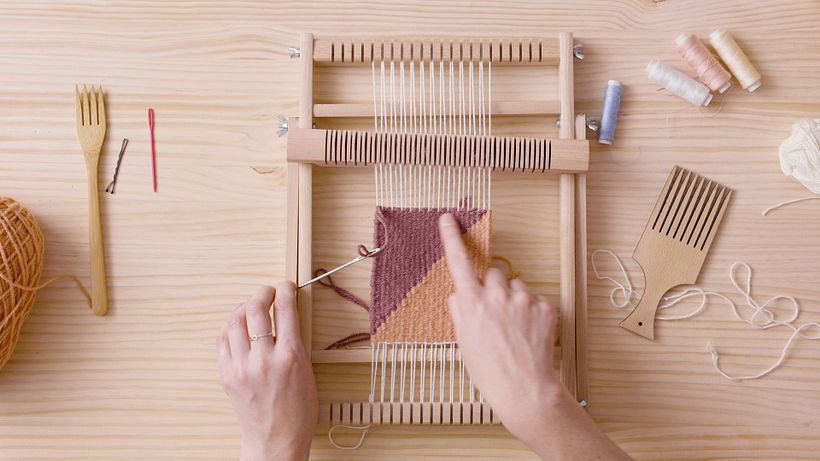
Step 6: Make a second row of knots
Take your thread and tie another row of knots around every warp thread in a horizontal line across the top of your design, the same as you did at the very beginning. This will secure your weave and keep your design in place.
Step 7: Tidy up any loose ends
Turn your loom over to show all of the loose ends of your yarn. Where you can, tie these ends in a double knot and cut off any excess. If you are unable to tie a knot, take a smaller needle and use it to tuck in any loose ends.
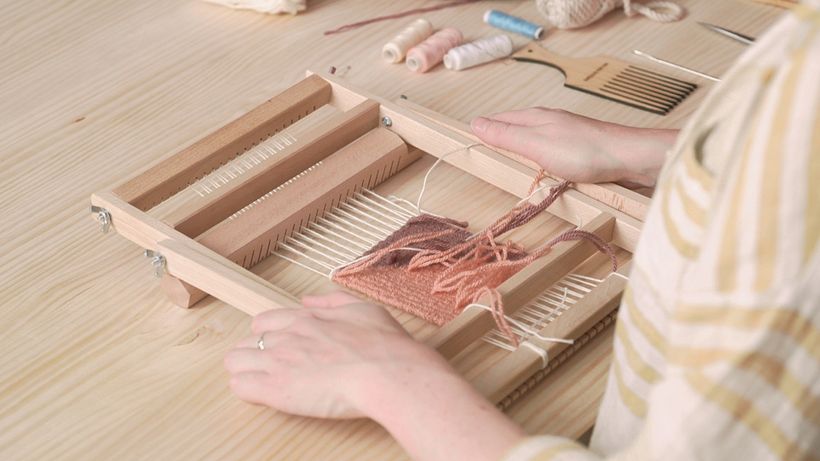
Step 8: Create your circle
Turn your loom back over. Take your cotton cord and place it on top of your design to make a circular shape, with the ends overlapping by around 1cm, before cutting off the excess cord. Now take your yarn (Marion uses a yellow color) and begin wrapping it around the cord. Use the yellow thread to close the ends of the circle by wrapping over the top of the overlapping cord.
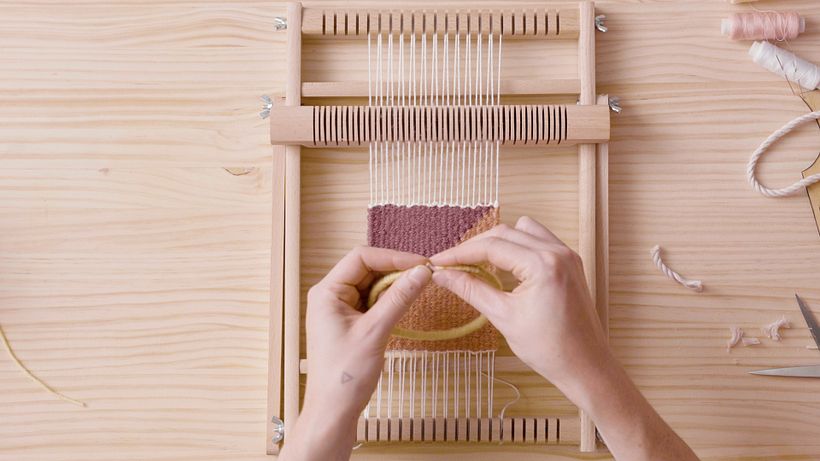
Step 9: Attach your circle
Sew your circle onto your woven design by taking your smaller needle and threading it with a piece of cotton thread. Begin underneath the design and bring the needle upwards towards the front, looping it around the circle as you go to secure it to the woven base. Once you have finished, cut your coaster design off the loom. Marion leaves the ends to create a fringed effect.
Do you want to learn more about this craft? If you enjoyed this tutorial and would like to learn how to use a frame loom to create original, woven tapestries that bring warmth and color to any space, why not check out Marion’s course “Contemporary Tapestry Weaving.”
You may also like:
- Weaving Tutorial: How to Create the Pompom Effect
- Hand Weaving Techniques for Beginners, a course by Lucy Rowan
- 4 Inspiring Books for Starting Out in Weaving






0 comments